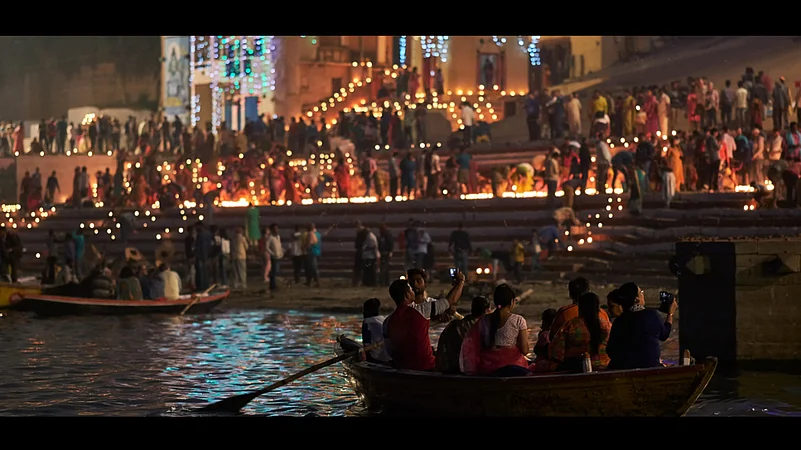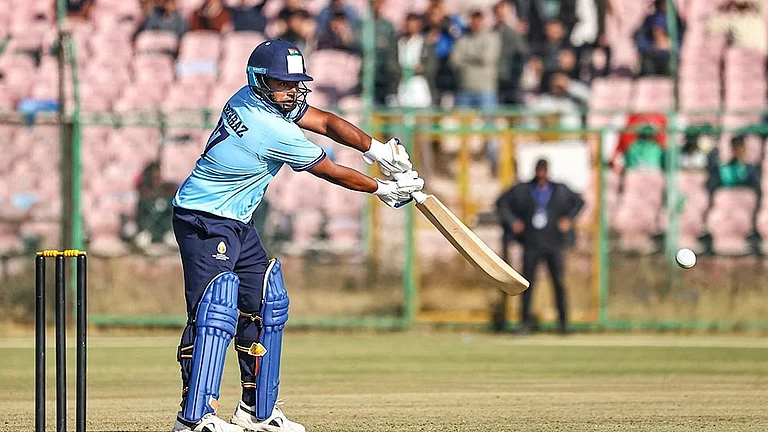It’s no secret that India worships its rivers. From the north to the south, from the Ganga to the Kaveri, India’s rivers have not only sustained civilisations and populations for thousands of years, they have also given rise to several endearing myths and tales that still remain integral to India’s religious traditions and folklore.
In popular imagination, India’s rivers have been formed as much by geological factors as they have due to the boons bestowed by benevolent gods upon penitent, devoted people and sages. Outlook Traveller takes a look at the stories and myths that have shaped the formation of some of India’s greatest and most beloved rivers. We start with the holy Ganga.
Myths and legends
For millennia, the Ganga has nurtured much of current-day north and east India. The 2,525-km-long river drains the states of Uttarakhand, Uttar Pradesh, Bihar, Jharkhand and West Bengal, before flowing into Bangladesh where it meets the Bay of Bengal. It has given birth to numerous centres of civilisation and religious significance—Devprayag, Haridwar, Prayagraj, Rishikesh, Varanasi being only a few of them. So, how did this enormous river come to be?
Scientifically speaking, it is believed that the same tectonic movements that led to the ascension of the Himalayas also gradually gave birth to the Ganga. However, if you were to ask the same question to a holy person, they would probably point you towards many myths. One myth attributes Ganga’s descent to Lord Indra’s slaying of the serpent Vritra, which released the divine liquid, soma (the so-called nectar of the gods) onto earth. There’s also a more cosmic tale that tells the story of how Vishnu, during his travels, opened a hole in the firmament of heaven and released the Vishnupadi. The Vishnupadi first flowed into Indra’s realm, then across the Milky Way to the moon. It then made its way to Brahma’s realm (earth) where it arrived astride the lotus-shaped Mount Meru whose petals signify the continents. It then split apart into several streams, one of which entered the Indian subcontinent as the Bhagirathi.

However, the most well-known origin story of the Ganga involves Lord Shiva, the Kosala king Bhagiratha and the sage Kapila. The story goes that king Sagara, an ancestor of king Bhagiratha, once conducted an ashwamedha yagna to extend his dominion. When the horse went astray, the king sent his 60,000 sons to find the horse. Unfortunately, in the course of the quest, they ended up disrupting the intense meditation of sage Kapila, at whose abode they found the horse. Kapila burnt them all to ashes, sending them all to the netherworld—an act he instantly regretted when he realised what had happened. After breaking the news to king Sagara, he mentioned that the souls of king Sagara’s sons could attain salvation only if the heavenly Ganga could be persuaded to flow over their ashes.
It was Bhagiratha whose austere penance and devotion pleased Lord Shiva so much so that he persuaded Ganga to descend to earth. Ganga consented, but the problem arose that earth would probably be unable to bear the intensity of Ganga’s flow and even be shattered in the process. Thus, a solution was devised: Ganga would first land on Shiva’s head and the locks of his hair would minimise the impact. Still, the force of Ganga’s landing was such that it split into seven tributaries, three of which flowed east and three of them west. The seventh stream followed king Bhagirathi to the place where his ancestor’s ashes lay. The river’s waters instantly purified them. This is also the origin of the belief that the Ganga’s waters can purify mortal souls of all their sins.
Where to go

There’s no dearth of pilgrimage places on the banks of the Ganga. However, Devprayag probably holds a special significance, entirely its own, as the one place where you can watch the point of origin of this river. Gomukh happens to be the starting point of Bhagirathi, one of the main tributaries, but it is in Devprayag that you see Alaknanda and Bhagirathi merge to form the Ganga. You can spend hours at the peaceful ghats or take a look around at the numerous shrines and temples dotting the area—the Sri Koteshwar Mahadev Mandir, the Raghunathji Mandir and the Chandrabani Temple among them.
Festival to attend
From the Kumbh Mela to the Ganga Sagar Utsav, numerous festivals of religious significance are held on the banks of the Ganga or at its sangams. However, the Ganga Mahotsav in Varanasi deserves a special mention, if only for the fact that the final day of the five-day festival coincides with Dev Deepavali.

Numerous cultural programmes are organised during these five days—classical music events, arts-and-crafts exhibitions and bazaars, wrestling events, boat rides, and more. But, it is the concluding day on Kartik Purnima that grabs the most eyeballs—and rightfully so. Dev Deepavali is a spectacle that has to be seen to be believed. To see an entire city lit up with over a million earthen lamps is the experience of a lifetime. Thousands of these lamps are sent floating on the Ganga, or stand on the ghats or glimmer from the courtyards and verandas of the houses, heralding the descent of the gods onto the ghats. The evening aarti at the Dashameshwar Ghat is quite a grand affair.





















